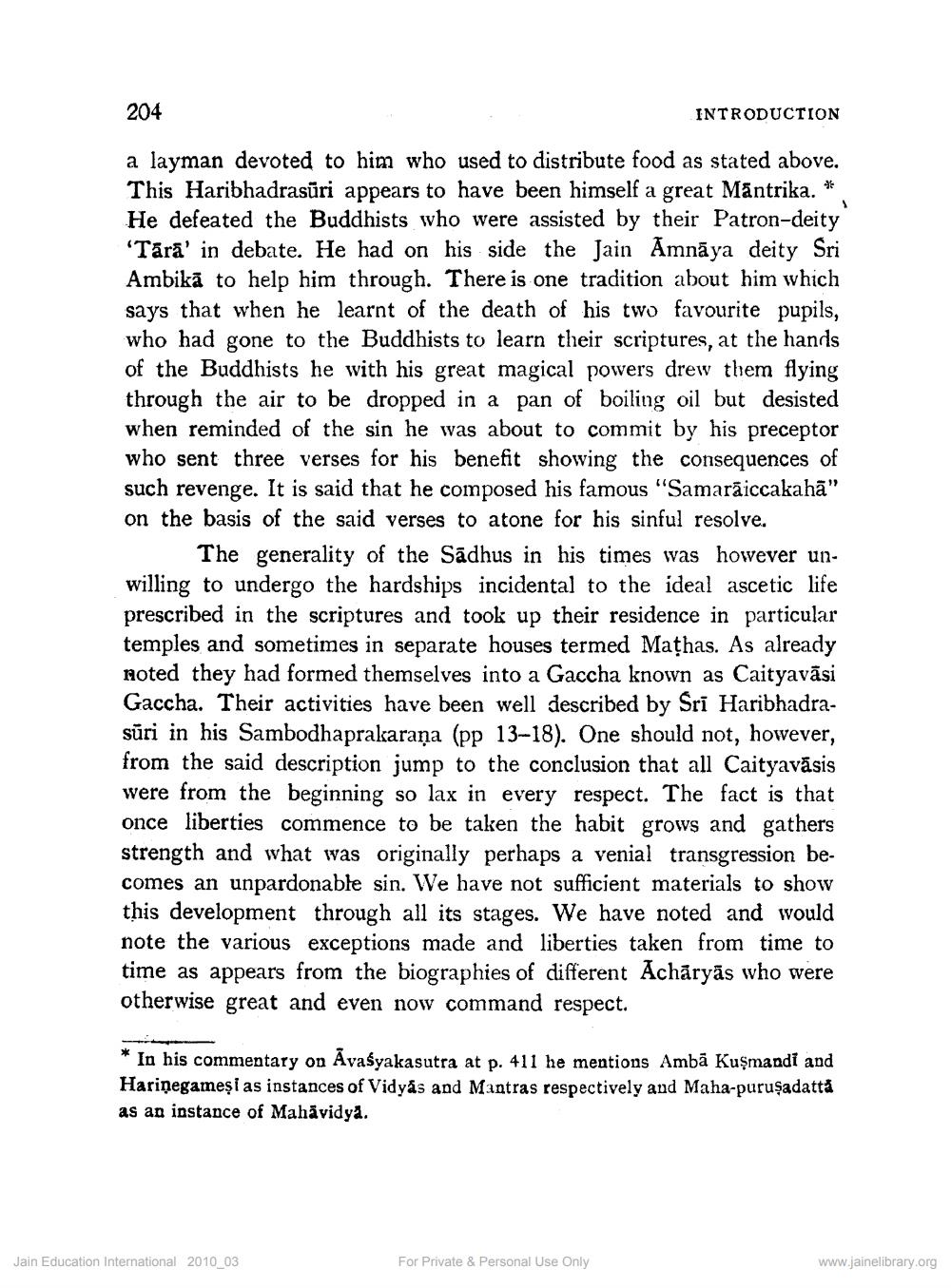________________
204
INTRODUCTION
a layman devoted to him who used to distribute food as stated above. This Haribhadrasūri appears to have been himself a great Mantrika. * He defeated the Buddhists who were assisted by their Patron-deity 'Tāra' in debate. He had on his side the Jain Amnāya deity Sri Ambikā to help him through. There is one tradition about him which says that when he learnt of the death of his two favourite pupils, who had gone to the Buddhists to learn their scriptures, at the hands of the Buddhists he with his great magical powers drew them flying through the air to be dropped in a pan of boiling oil but desisted when reminded of the sin he was about to commit by his preceptor who sent three verses for his benefit showing the consequences of such revenge. It is said that he composed his famous "Samarāiccakahā" on the basis of the said verses to atone for his sinful resolve.
The generality of the Sādhus in his times was however unwilling to undergo the hardships incidental to the ideal ascetic life prescribed in the scriptures and took up their residence in particular temples and sometimes in separate houses termed Mathas. As already noted they had formed themselves into a Gaccha known as Caityavāsi Gaccha. Their activities have been well described by Sri Haribhadrasūri in his Sambodhaprakarana (pp 13-18). One should not, however, from the said description jump to the conclusion that all Caityavasis were from the beginning so lax in every respect. The fact is that once liberties commence to be taken the habit grows and gathers strength and what was originally perhaps a venial transgression becomes an unpardonable sin. We have not sufficient materials to show this development through all its stages. We have noted and would note the various exceptions made and liberties taken from time to time as appears from the biographies of different Achāryās who were otherwise great and even now command respect.
-
* In his commentary on Avašyakasutra at p. 411 he mentions Ambā Kuşmandi and Hariņegameşias instances of Vidyas and Mantras respectively and Maha-puruşadatta as an instance of Mahavidya.
Jain Education International 2010_03
For Private & Personal Use Only
www.jainelibrary.org




